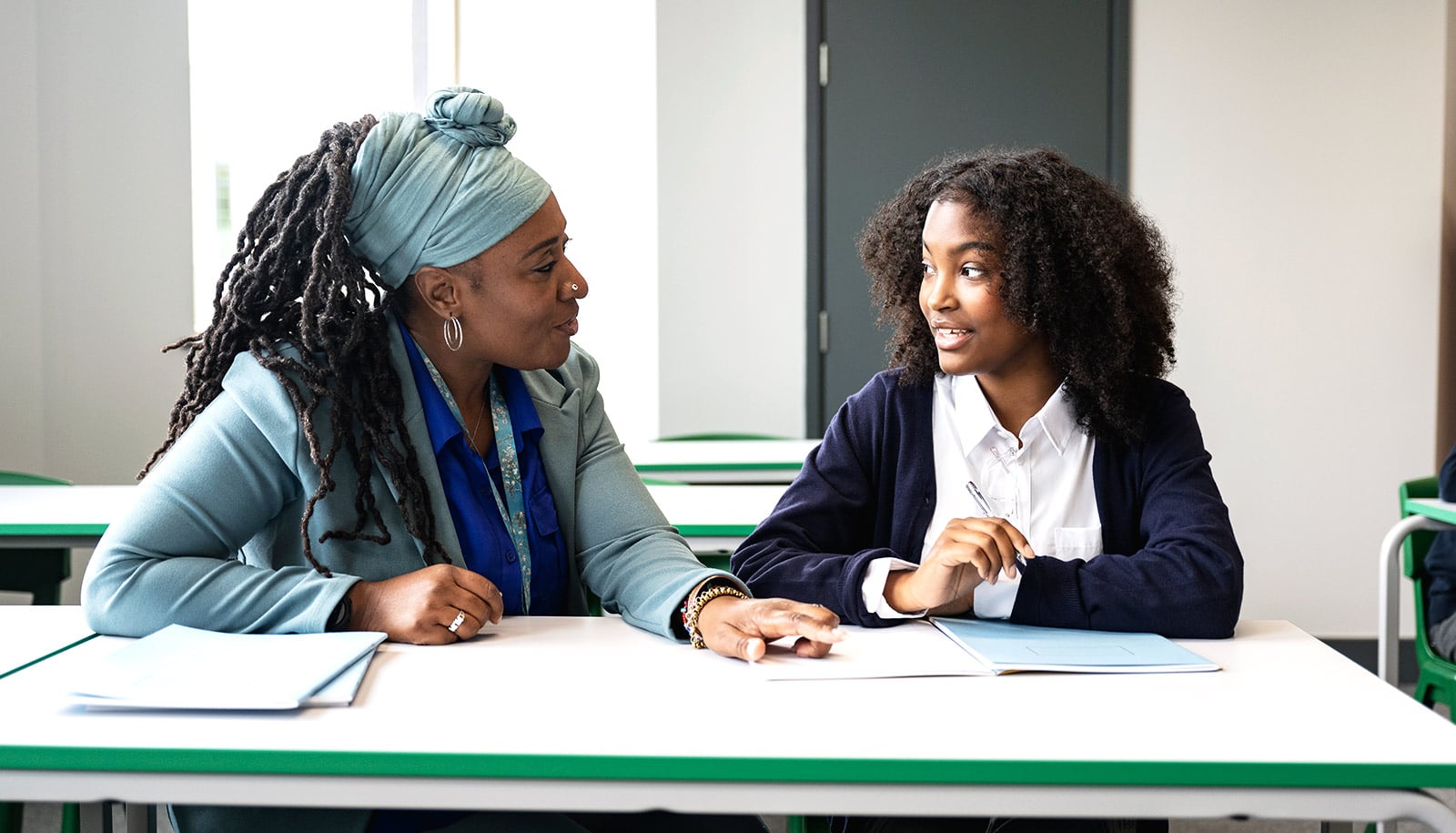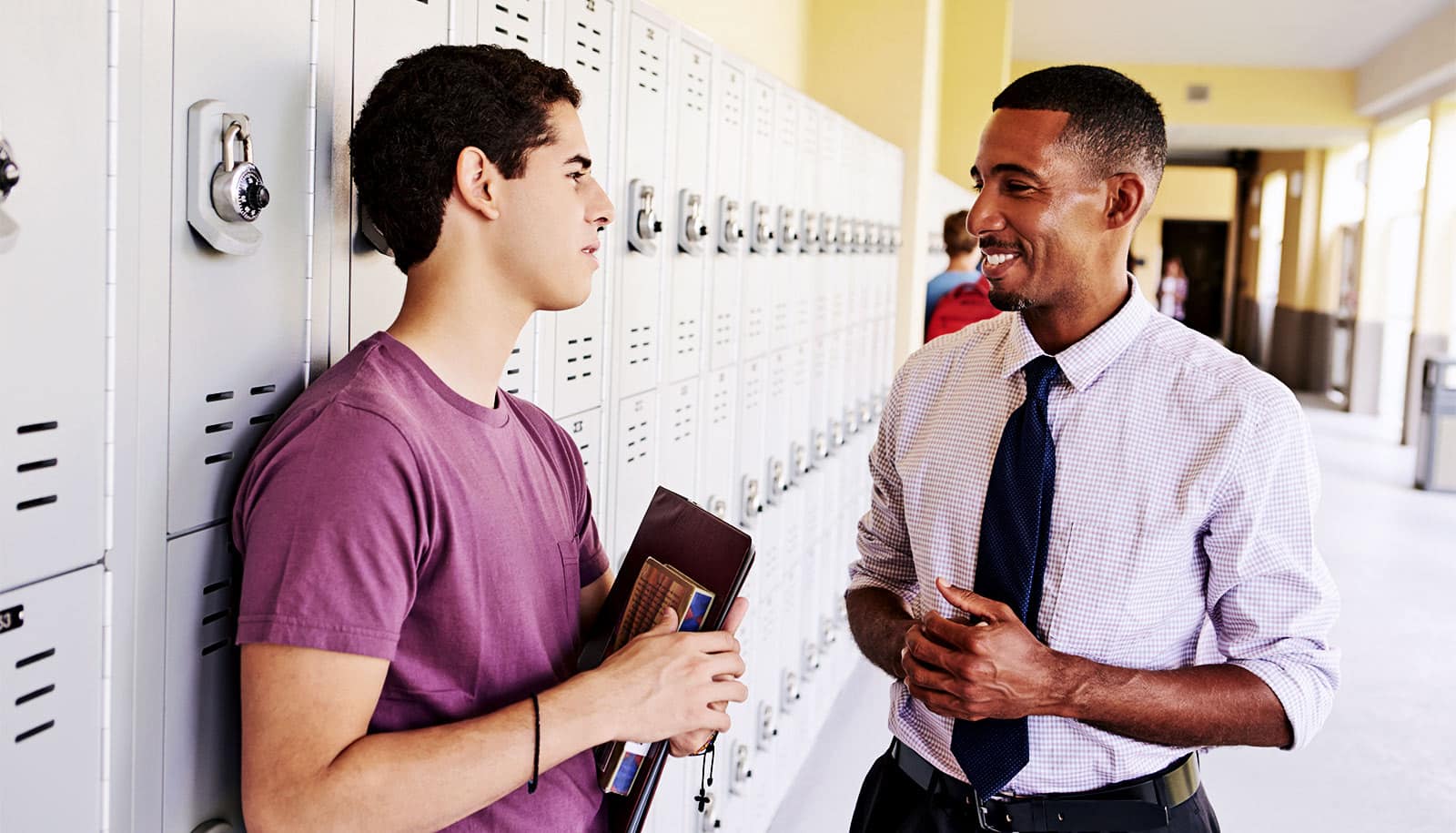Social connectedness, a feeling of belonging at school and in the community, can play an important role in suicide prevention among high-risk teens, new research shows.
Teachers, social workers, and even neighbors and community members all can make a difference in vulnerable teens’ lives, says Lauren Berny, a doctoral candidate in prevention science at the University of Oregon’s College of Education and research fellow at the Prevention Science Institute.
Berny is lead author of two new studies that found caring connections with adults and peers can help protect youth who are at high risk for suicide. The studies are published in Children and Youth Services Review and in Child Psychiatry & Human Development.
“This research shows the significant difference it makes when vulnerable teens can say, ‘My teacher cares about me,’ or ‘The adults in my life would be concerned if something was going on with me,'” Berny says. “Both studies point to the need for a comprehensive approach to teen suicide prevention that goes beyond clinical treatment, such as therapy and medication.”
People who are struggling or are in crisis may call the 988 Suicide & Crisis Lifeline for free, confidential support. Call or text 988 or chat 988lifeline.org.
Youth suicide is a critical public health concern in the United States. About 20% of US high school students said they had serious thoughts of suicide, and 9% reported they had attempted suicide over the past year, according to a recent Centers for Disease Control and Prevention survey. Yet there is an ongoing national shortage of mental health services.
For her research, Berny analyzed baseline data from nearly 300 teens, ages 13-19, from Minnesota, Wisconsin, and Texas who participated in a larger study on the effectiveness of recovery high schools.
The sample was at higher risk for suicide than average teens. More than half the group, 58%, reported that they had thought about or attempted suicide at some point in their life. Nearly all the teens, 98%, had a drug or alcohol use disorder, and 94% met diagnostic criteria for one or more mental health conditions.
One of Berny’s studies explored the links between interpersonal violence, such as sexual or physical abuse or weapon violence, and suicide risk. More than half of the group, 57%, said they had experienced at least one form of that type of violence. Earlier research has found that interpersonal violence was associated with a 10 times higher risk of dying by suicide before age 20.
The other study looked at the association between mental health conditions—major depressive disorder, panic disorder, or disordered eating—and suicide risk. About 80% of the sample met clinical screening criteria for at least one of those mental health conditions.
Berny says she was surprised to discover the risk factors for suicidal thoughts are different from the risk factors for suicide attempts. At the outset of her research, she thought depression would be a major risk factor for both. Depression did turn out to be closely linked to suicidal thoughts, but teens’ history of interpersonal violence was more strongly linked to suicide attempts.
Both studies found that measures of connectedness in school and neighborhoods were associated with a lower risk of suicide attempts among these high-risk teens. The results also showed that sexual abuse survivors who reported strong teacher support and positive interactions with classmates were significantly less likely to report a prior suicide attempt than those with low levels of those measures of school connectedness. Strong neighborhood social connections had the same protective effect for survivors of sexual and physical abuse and teens with disordered eating.
Schools and communities can help foster protective relationships through approaches like peer support groups for teens who are dealing with similar struggles and mentorship programs that pair youth with adult mentors who have shared identities or life experiences.
“For example, a number of schools around the country have Lunch Buddy Programs where adults spend an hour a week with a student who could use some extra support,” Berny says. “I think even small things like that can make a meaningful difference.”
People who are struggling or are in crisis may call the 988 Suicide & Crisis Lifeline for free, confidential support. Call or text 988 or chat 988lifeline.org.
Source: Sherri Buri McDonald for University of Oregon



